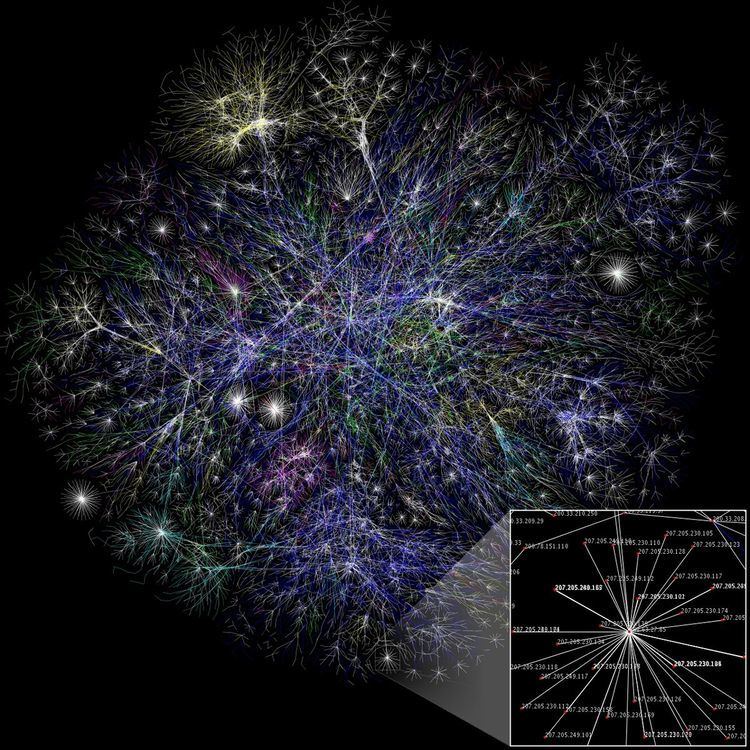 | ||
The study of interdependent networks is a subfield of network science dealing with phenomena caused by the interactions between complex networks. Though there may be a wide variety of interactions between networks, dependency focuses on the scenario in which the nodes in one network require support from nodes in another network.
Contents
Motivation for the model
In nature, networks rarely appear in isolation. They are typically elements in larger systems and can have non-trivial effects on one and other. For example, infrastructure networks exhibit interdependency to a large degree. The power stations which form the nodes of the power grid require fuel delivered via a network of roads or pipes and are also controlled via the nodes of communications network. Though the transportation network does not depend on the power network to function, the communications network does. Thus the deactivation of a critical number of nodes in either the power network or the communication network can lead to a series of cascading failures across the system with potentially catastrophic repercussions. If the two networks were treated in isolation, this important feedback effect would not be seen and predictions of network robustness would be greatly overestimated.
Dependency links
Links in a standard network represent connectivity, providing information about how one node can be reached from another. Dependency links represent a need for support from one node to another. This relationship is often, though not necessarily, mutual and thus the links can be directed or undirected. Crucially, a node loses its ability to function as soon as the node it is dependent on ceases to function while it may not be so severely effected by losing a node it is connected to.
In percolation theory, a node is considered active as long as it is connected to the giant component. The introduction of dependency links adds another condition: that the node that it depends on is also active.
Dependency can be defined between different networks and also within the same network.
Percolation properties and phase transitions
Interdependent networks have markedly different percolation properties than single-networks.
If a single network is subjected to random attack
However, when multiple networks are interdependent, cascading failures emerge due to the positive feedback caused by dependency links. This family of processes causes a discontinuous or first order phase transition. This has been observed for random networks as well as lattices. Furthermore, for embedded interdependent networks the transition is particularly precipitous without even a critical exponent for
Surprisingly, it has been shown that—contrary to the results for single networks—interdependent random networks with broader degree distributions are more vulnerable than those with narrow degree distributions. The high degree which is an asset in single networks can be a liability in interdependent networks. This is because the hubs which increase the robustness in single networks can be dependent on vulnerable low-degree nodes. The removal of the low-degree node then removes the hub and all of its links.
Dynamics of cascading failure
A typical cascading failure in a system of interdependent networks can be described as follows: We take two networks
Effect of network topology
In interdependent random networks in which a fraction
In spatially embedded interdependent networks, a new kind of failure has been observed in which a relatively small failure can propagate through space and destroy an entire system of networks.
Comparison to many-particle systems in physics
In statistical physics, phase transitions can only appear in many particle systems. Though phase transitions are well known in network science, in single networks they are second order only. With the introduction of internetwork dependency, first order transitions emerge. This is a new phenomenon and one with profound implications for systems engineering. Where system dissolution takes place after steady (if steep) degradation for second order transitions, the existence of a first order transition implies that the system can go from a relatively healthy state to complete collapse with no advance warning.
